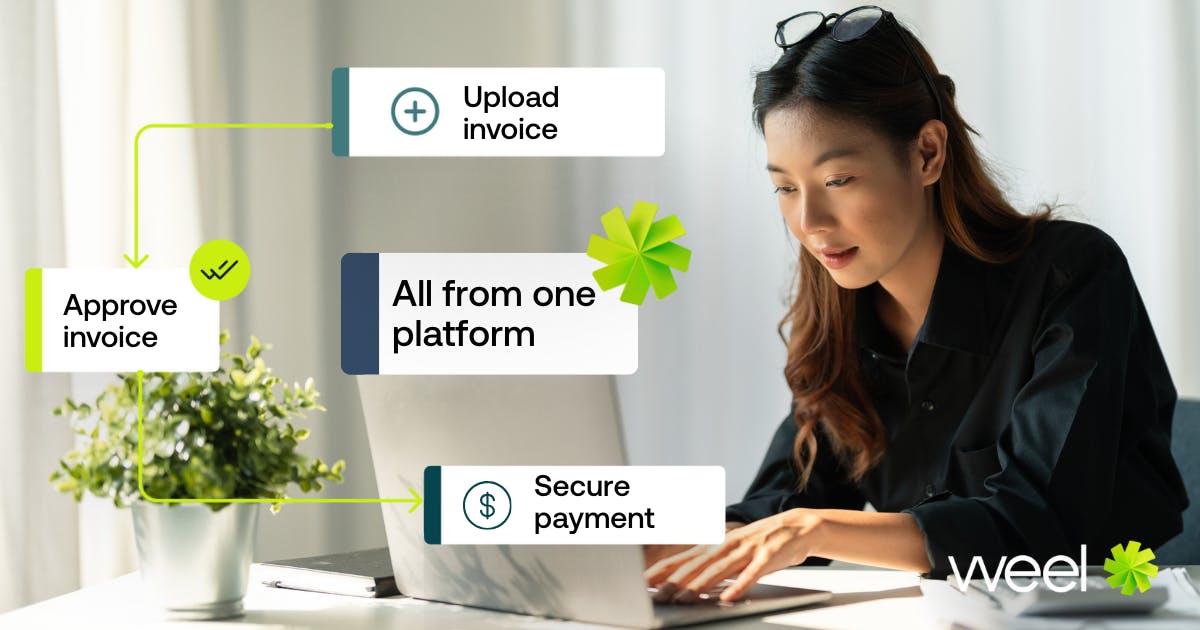With nearly 50% of SMEs now trading internationally, AP leaders need new levels of rigour and sophistication. This guide provides a framework for navigating global AP complexities, from secure payment protocols and robust fraud prevention to modern automation best practices.
Navigating the complexities of global AP
The international accounts payable (AP) landscape is fundamentally more intricate than its domestic counterpart. It involves managing payments to a global network of suppliers and vendors, each operating under different laws, banking systems, and currencies. The entire accounts payable process, from invoice receipt to final reconciliation, is amplified by cross-border variables. This complexity creates significant risks, including payment delays, compliance breaches, and increased vulnerability to fraud. However, it also presents opportunities. A well-managed international AP function can strengthen global vendor relationships, optimise cash flow, and provide a competitive advantage in a globalised market. The projected growth of the Accounts Payable Market to $2.791 billion by 2032 underscores its increasing importance and the critical need for modern solutions.
Forward-thinking finance teams are increasingly turning to automation tools like Weel’s Accounts Payable solution to manage this complexity with confidence. With built-in controls, approval workflows, and real-time visibility, Weel helps businesses reduce manual errors and streamline global payment operations.
Understanding the international accounts payable landscape
Successfully managing global payments begins with a clear understanding of what sets international AP apart. It’s not simply about sending money overseas; it’s about navigating a distinct ecosystem of financial, regulatory, and logistical hurdles that can impact everything from profitability to supplier trust.
The scope of international AP:
International accounts payable encompasses every financial obligation a company has to a supplier or vendor based outside its home country. This includes processing a foreign-language invoice for raw materials, paying an international contractor for services, or reimbursing a global employee. The process involves validating the legitimacy of the vendor, ensuring the invoice is accurate and approved through proper internal controls, managing currency conversion, executing the cross-border payment through networks like SWIFT, and performing the final reconciliation against company records.
Key differences from domestic AP:
While the core goal of paying a supplier on time remains the same, international AP introduces several critical layers of complexity:
- Currency & foreign exchange (FX): Domestic AP deals with a single currency. International AP requires managing multiple currencies, exposing the business to FX rate volatility which can significantly impact the final cost of goods and services and complicate cash flow forecasting.
- Payment methods & costs: Domestic payments are often simple and low-cost (e.g., EFT). International payments frequently rely on wire transfers via systems like SWIFT, which can be slower and more expensive due to intermediary bank fees.
- Regulatory & tax compliance: Each country has unique tax laws (e.g., VAT, GST), reporting requirements, and anti-money laundering (AML) regulations. Non-compliance can lead to severe financial and legal penalties.
- Data & documentation: An international invoice may be in a different language, format, and currency, and may require additional documentation for customs or tax purposes, complicating the validation and approval process.
Building a secure foundation: robust international vendor management

The security of your entire international payments process hinges on how you manage your vendors. A global supplier is not just a provider but a potential entry point for fraud if not properly vetted and managed. Establishing a secure, standardised process for onboarding and maintaining vendor relationships is non-negotiable.
Secure vendor onboarding for global operations
A rigorous onboarding process is your first line of defence. Before a new international vendor is entered into your system, a multi-step verification process must be completed. This includes confirming the legal name, address, and tax identification numbers against official records. Banking information must be independently verified through secure channels, never solely through email correspondence. This diligence helps prevent payments to fraudulent entities or "ghost vendors" set up to siphon funds. A centralised vendor master file, governed by strict access controls, ensures that only authorised and thoroughly vetted suppliers can receive payments.
Maintaining secure vendor relationships
Security doesn't end after onboarding. Strong vendor relationships built on trust and clear communication are crucial. Regularly scheduled reviews of your vendor master file help identify dormant accounts that could be exploited. Furthermore, establish a secure, multi-factor authentication portal for vendors to update their own information, such as bank details. Any change request submitted via email should trigger a mandatory callback verification process to a pre-established contact at the supplier. This proactive management builds trust, reduces the risk of payment redirection fraud, and demonstrates a commitment to partnership, a "soft sell" approach that solidifies long-term loyalty far more effectively than a transactional, "hard sell" mindset.
Fortifying international payments: comprehensive fraud prevention strategies
The risk of fraud escalates dramatically in the international arena, where anonymity is easier for criminals and recovery is more difficult. The financial stakes are high, with total fraud losses reaching $12.5 billion in 2024 alone. A multi-layered defence is essential to protect company assets.
Identifying key international fraud risks:
International AP is a prime target for sophisticated fraud schemes. Business Email Compromise (BEC) is a leading threat, where fraudsters impersonate a CEO or a trusted vendor to request an urgent, unauthorised payment. Payment redirection is another common tactic, where a criminal, posing as a supplier, provides new bank account details for an upcoming invoice payment. Other risks include fraudulent invoices for services never rendered and internal fraud where an employee colludes with an external party. The prevalence of these threats is alarming; according to recent data, 80% of organisations were victims of payment fraud attacks or attempts in 2023.
Multi-layered fraud detection & prevention:
A robust defence relies on a combination of technology, processes, and people.
- Strong internal controls: The bedrock of fraud prevention is a clear separation of duties. The person who onboards a vendor should not be the same person who approves an invoice or initiates a payment. This segregation of duties makes it significantly harder for a single individual to commit fraud.
- Three-way matching: Before any invoice is paid, it should be automatically matched against the corresponding Purchase Order (PO) and the goods receipt note. This ensures the company only pays for what it ordered and received.
- Automation and AI: Modern AP automation platforms can flag anomalies that a human might miss, such as a change in a vendor's bank account, a duplicate invoice number, or a payment amount that deviates from historical patterns. Machine learning algorithms can analyse vast datasets to detect subtle signs of fraud in real-time.
Incident response & recovery for international fraud

Even with strong defences, fraud can occur. A clear incident response plan is critical. This plan should outline immediate steps to take, including contacting banks to attempt to freeze or recall funds, notifying law enforcement, and conducting an internal investigation to understand how the breach occurred and prevent a recurrence. Time is of the essence, and a swift, coordinated response can significantly increase the chances of recovering lost funds.
Mastering foreign exchange (FX) for optimal International payments
For any business engaged in global trade, foreign exchange isn't just a variable; it's a critical financial risk that must be actively managed. Fluctuations in currency values can erode profits, disrupt cash flow, and complicate financial planning.
Understanding foreign exchange risk
FX risk is the potential for financial loss due to changes in the exchange rate between two currencies. For example, if an Australian company agrees to pay a European supplier €100,000 for an invoice due in 90 days, the final cost in Australian dollars is unknown. If the dollar weakens against the euro during that period, the cost of paying that invoice will increase, directly impacting the company's profit margin. This uncertainty makes accurate budgeting and cash flow management a significant challenge.
Strategic FX management techniques
Proactive FX management can mitigate this risk. Companies can use several strategies:
- Forward contracts: A forward contract allows you to lock in an exchange rate for a future date. This eliminates uncertainty and guarantees the exact cost of a future payment in your home currency.
- Currency options: Options provide the right, but not the obligation, to buy or sell a currency at a predetermined rate, offering flexibility while still protecting against adverse rate movements.
- Partnering with a specialist: Working with a specialised cross-border payments provider can offer access to better exchange rates, lower transaction fees, and expert guidance on hedging strategies, often providing more efficient and cost-effective solutions than traditional banking channels like SWIFT.
Modernising international AP with automation and technology
Manual accounts payable processes are inefficient, error-prone, and a significant liability in a global context. The evolution from paper checks, which only 8% of organisations now use most often to pay suppliers, to digital methods highlights a broader trend. Embracing AP automation is no longer a luxury but a necessity for secure, scalable, and efficient international operations.
The power of AP automation for flobal operations
AP automation streamlines the entire accounts payable process, from invoice capture to payment execution and reconciliation. It eliminates manual data entry, reduces the risk of human error, and accelerates approval workflows. For international AP, this means faster processing of multi-language invoices, automated validation against purchase orders, and seamless integration with global payment systems. The result is fewer late payments, improved vendor relationships, and enhanced visibility into global spend and cash flow.
Key automation technologies for international AP
Several technologies are transforming the AP landscape:
- Optical character Rrecognition (OCR): OCR technology automatically extracts key data from an invoice, regardless of its format or language, eliminating the need for manual keying.
- Machine learning (ML): ML algorithms can intelligently code invoices to the correct general ledger accounts, identify potential duplicate payments, and, most critically, detect anomalies indicative of fraud.
- Cloud-based platforms: Modern AP automation solutions are cloud-based, providing a centralised platform for managing global payables, accessible to team members anywhere in the world. This fosters collaboration and provides real-time visibility.
Enhancing security through automation
Automation is a powerful tool for strengthening internal controls. An automated system can enforce segregation of duties, create an immutable audit trail of every action taken on an invoice, and automatically flag exceptions for review. By digitising the process, automation reduces the risk of physical document tampering or loss and provides a secure, transparent environment for managing high-value international payments.
Best practices for a secure & efficient international accounts payable function
Achieving excellence in international AP requires a holistic approach that combines robust processes, regulatory awareness, and a culture of continuous improvement.
Establishing robust internal controls
Strong internal controls are the foundation of a secure AP department. This includes mandating dual approvals for large payments, regularly reviewing system access rights to ensure employees only have the permissions necessary for their roles, and enforcing the strict segregation of duties between vendor setup, invoice processing, and payment authorisation.
Ensuring global regulatory compliance
Navigating the complex web of international regulations is critical. This means staying current on tax requirements (like W-8/W-9 forms in the U.S.), sanctions screening against lists like OFAC, and country-specific data privacy laws. AP automation platforms can help by embedding compliance checks directly into the workflow, ensuring that all payments are properly vetted before execution.
Continuous improvement & performance measurement:
Treat your AP function like any other strategic business unit. Track key performance indicators (KPIs) such as invoice processing time, on-time payment rate, and the number of exceptions. Regularly analyse this data to identify bottlenecks and areas for improvement. This data-driven approach fosters a culture of efficiency and continuous optimisation.
Building trust in a global ecosystem:
Ultimately, an effective international accounts payable process is about building trust. It assures your internal stakeholders and leadership that financial assets are secure. It shows your global suppliers that you are a reliable partner, which can lead to better payment terms and stronger vendor relationships. This trust is the cornerstone of successful and sustainable global business operations, ensuring every customer and partner interaction is built on a solid financial foundation.
Conclusion: embracing the future of secure international accounts payable

The landscape of international accounts payable is evolving rapidly, driven by globalisation and technological advancement. Moving beyond manual processes is no longer optional; it is essential for security, efficiency, and growth. By building a foundation of robust vendor management, implementing multi-layered fraud prevention, strategically managing foreign exchange, and leveraging the power of AP automation, businesses can transform their AP function from a reactive cost centre into a proactive, strategic enabler of global success.
The key takeaways are clear: prioritise security through stringent internal controls, enhance efficiency with smart automation, and foster strong vendor relationships through reliable and transparent payment processes. The next step is to assess your current accounts payable process, identify vulnerabilities and inefficiencies, and explore modern technology solutions that can bridge these gaps. Embracing these best practices will not only protect your organisation from significant financial and reputational risk but will also position it to thrive in an increasingly interconnected global economy.
As your organisation explores modernisation opportunities, consider how Weel’s Accounts Payable solution can help transform your finance operations. By combining automation, security, and transparency in one platform, Weel empowers teams to manage international payments confidently, while staying compliant and in control.
Want to see how Weel can streamline your finance processes? Start your FREE 14-day trial or book a demo with our team today.
Get the latest news and insights straight into your inbox. Subscribe to the Weelhouse Wire.











.png)


